Readers' most-tipped stocks, ETFs and funds for the charge to net-zero
Well, well, well. We have seen an absolute bloodbath to start 2022 - and it doesn't look to be stopping anytime soon. The S&P 500 has fallen nearly 16% year to date, while the domestic index has tumbled 6.8%.
Whether this is just a blip or the sign of an enduring bear market, these times present exciting buying opportunities for investors. To go with a cliche:
You make most of your money in a bear market, you just don’t realize it at the time. - Shelby Cullom Davis
And where better to look for opportunities than the biggest structural change markets have seen for decades. Decarbonisation has undeniable momentum - over 130 governments have committed to net-zero targets. Estimates have cost the transition at over $50 trillion - and that represents a huge revenue opportunity for the companies that can become leaders within this theme.
Accordingly, we set out to hear your best decarb picks - and boy it was interesting.
In first place with a resounding 37% of votes was 'Unsure' - A lot of you appear to have no idea what the best way to capitalise on a decarbonising planet is. And who would blame you? The sector is still in a nascent stage and every company is claiming to be the world's answer to reducing emissions. This makes us all the more excited to present your top ideas as we continue rolling through our 2022 Decarbonisation series.
As for the rest of the votes, a clear preference for miners came through. You firmly believed that the best way to gain exposure in Australia at the moment appears to be through mining the "picks and shovels" of the decarbonisation trade (confusing analogy I know).
Without further ado, read on below to discover the 11 stocks, 5 ETFs and 3 managed funds that our esteemed readers believe present the most compelling opportunity to decarbonise the planet.
.png)
Stocks
Calix (ASX: CXL)
Your top-rated decarbonisation stock was Calix, a global sustainable material processor that is aiming to revolutionise carbon sequestration - the process of removing CO2 from the atmosphere by storing it in solid or liquid form - through its proprietary Kiln. This industrial solution allows the creation of green cement that captures carbon emissions in an extremely low-cost manner. While they missed on their latest result, the company has continued to attract investor attention through new patents for green steel and strategic partnerships with Suvo. They also recently confirmed financial backing for its new LEILAC-2 project, where it "aims to demonstrate, at industrial scale, a breakthrough technology that can capture a cement or lime plant’s unavoidable process emissions for minimal cost, thereby providing a viable and effective decarbonisation solution."
In a recent Buy Hold Sell, John Deniz from Paragon rated it a compelling buy:
Calix is one of the very few ways to gain pure-play exposure to the de-carbonisation theme. The growth pipeline is enormous and it's only strengthening with the carbon price breaking all-time highs of over 80 euros a tonne. The carbon mitigation tech actually works, so I wouldn't call it a science project anymore.
On top of the signature "honeycomb" cement mentioned above, Calix's kiln enables it to create innovative solutions for a range of companies accross different industries. After capturing the CO2 from various materials and minerals, they can chemically produce innovative new patents accross biotech, batteries and water.
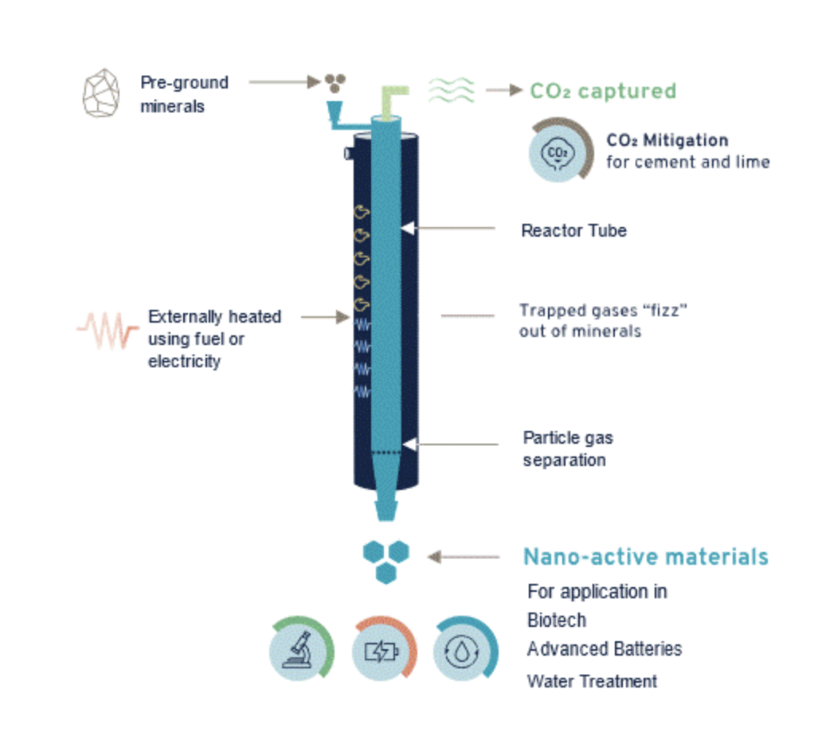
Fortescue Metals Group (FMG)
The Twiggy-led miner has been an ASX champion since it slashed its way through the index during the 2008 Chinese mining boom. They have been soaring again recently as the price of iron ore continues to climb in the context of a new commodities super-cycle. While FMG have seen delays and concerns linked to their Iron Bridge Project due to WA labour shortages and construction costs blowing out, it seems as though their saving grace could be Fortescue Future Industries (FFI) - their environmental focused investments vehicle.
In fact, our very own Hans Lee recently pointed out that FMG is up more than 270% since Fortescue Future Industries was launched five years ago. Whether this is causation or simply a spurious correlation is anyone's guess, but there is real momentum building given "FFI has inked an MOU with E. ON to supply up to five million tonnes per annum of green, renewable hydrogen to Europe by 2030."
Brokers remain mixed though, with Goldman Sachs heeding a cautious outlook towards the FFI's prospects and the subsequent impacts on FMG's future dividends.
"FMG is targeting a 10% allocation of NPAT to FFI renewable energy projects (green hydrogen, solar, wind, etc) but only when a project is investment ready...We think decarbonising the Pilbara could cost FMG over US$7bn and requires +US$50/t carbon or a green premia to be NPV positive...In order to fund FFI projects, we think FMG will need to reduce their dividend payout ratio from 80% to 50% from 2022 onwards."
Time will tell whether the world's fourth-largest iron ore producer can turn mining into impact.
Pilbara Mineral Resources (PLS)
A popular category of vote-getters were lithium producers - the building blocks of electrification. Pilbara is a Livewire fundie favourite and was the ASX200's top-performing stock in 2021, up a breathtaking 210.34% on the year. This momentum continued into this year, peaking at a 10+ bagger if you had bought at the start of 2021. Since then it has faltered slightly, but our fundies remain confident there are few better ways to play the trend.
I still really like the dynamic of lithium... The growth and demand are going to be significant. Some forecast six times growth between 2020 and 2030...I think there's going to be a deficit in lithium for quite a few years. That means elevated prices of lithium for longer. The company is aiming to triple its production between now and the next five years... So for us, earning surprise on price, volume, and capital management, it's a buy. - Stephane Andre (Alphinity)
"I think in the shorter term, PLS is a clean 100% exposure to that raw material shortage in lithium, through spodumene. For me, given the pricing backdrop, I think in the shorter term that's probably where you want to be." - Tim Serjeant (Eley Griffiths Group)
Allkem (AKE)
Allkem was formed as the product of the merger between Galaxy Resources and Orecobre, an arrangement that allowed the two high-flying lithium producers to gain new market share and boost profit margins as a combined entity. It is a top 5 producer of lithium globally. While many projects on Australian shores are yet to begin producing, Allkem has established reserves and is already distributing. In February, Rudi Filapek-Vandyck reported that their result was "operationally solid, although realised prices were below expectations."
In April 2022, they had a another positive 3rd quarter update as "prices continued to surge and spodumene is expected to double in the 4th quarter. They are targeting 3x production by 2026" - James Gerrish (Market Matters)
Mineral Resources (MIN)
If you are looking for the link between old and new-school commodities, then Mineral Resources is the stock for you. They produce both iron ore and lithium and have ridden this commodity super-cycle like a bull - upwards but with some big bumps along the way. The main worry for markets currently are high-cost iron-ore mines, but the expertise of its management team, sustainably high iron ore prices and lithium potential all offer attractive tailwinds.
They additionally operate a successful mining services business, with growth guidance of 20-25% this financial year. The market's overreaction to an underperforming iron ore business-led Emma Fisher from Airlie Funds Management to label Mineral Resources the cheapest lithium stock in the market:
In short, the fear around a falling iron ore price has created a unique opportunity to buy the cheapest lithium stock in the world, Mineral Resources. A quick Google Translate from English into Buffett yields: “be greedy when others are fearful”.
The market's rivalry between Mineral Resources and Pilbara looks set to endure.
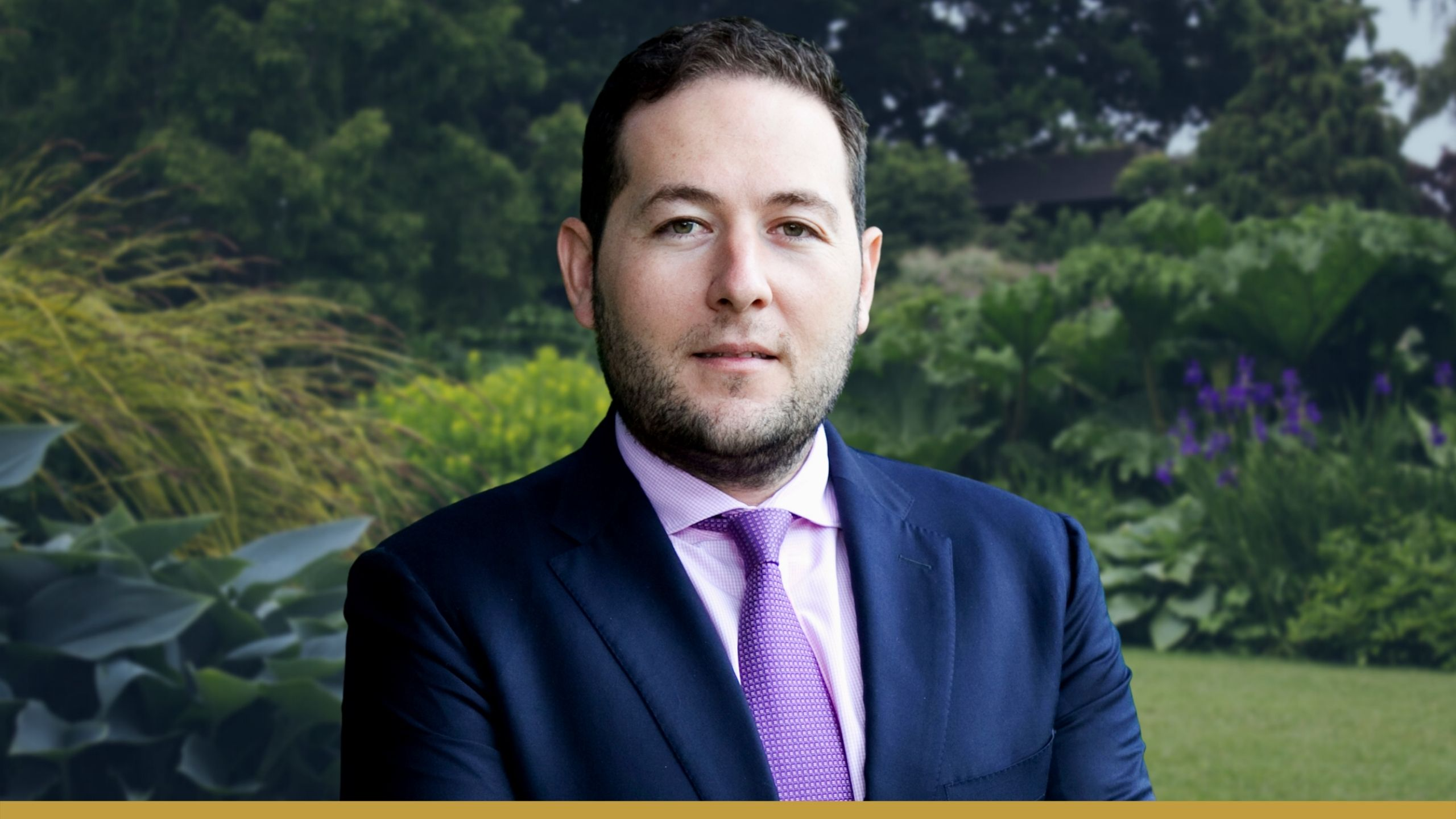.jpg)
Other lithium producers
A raft of other lithium and rare earth producers also made the list, highlighting the conviction of our readers that Australia's special advantage in the transition is our natural resources. Other vote-getters include:
Vulcan Energy (VUL): A prospective producer of 100% clean lithium through chemical extraction, meaning no 'traditional' mining processes are needed. This is a reader favourite after climbing more than 40x over the past 5 years (Quadragintupling, for those that were wondering), and it has stayed strong through a loyal shareholder base after a short-seller attack from J Capital in October 2021.
Although it already has supply agreements in place, the Net Zero Lithium project is a long way off shovel-ready. Its demonstration plant is set to open its doors in Q2 2022, while its production process is targeted to kick off in 2024. - Ally Selby
.jpg)
Lynas Rare Earths (LYC): As the world's largest producer of rare earths outside of China, Lynas is a popular pick given it at the "sweet spot of decarbonisation and geopolitical diversification." They produce a suite of critical inputs for the production of wind turbines, electric vehicles and other technologies essential to reaching net zero. Its most recent quarterly production numbers were on the soft side, however high prices persevered leaving more upside:
We think that prices are going to stay higher for longer. Demand is very, very strong here... Production-wise, we think that Lynas will come out with some surprise announcements of how they can really beef up the production volume that they will be aiming for in the next five years. - Stephane Andre
Lake Resource (LKE): As our readers' number 1 performing small-cap accross the first quarter of 2022, Lake Resources unsurprisingly made another appearance at the top of the charts. It realised a 97.52% return over this period. Lake's four projects are based in Argentina's 'Lithium Triangle', which produces 40% of the world's lithium at a low cost. They are aiming to produce using "direct extraction", a technology that requires no evaporation nor mining, leading to a "much smaller environmental footprint." Lake recently announced a non-binding MoU with Ford, "who is proposing to purchase about 25,000 tonnes a year of lithium chemicals from Lake’s Kachi project in Argentina."
Livewire guest Fundies John Deniz and Josh Clark were critical towards the blue skies pitched by the company, however Clark believes they may be onto something with their direct extraction method.
It is a play on direct lithium extraction, which hasn't been done before. It makes them a pioneer and there is a risk that that saying is true, that 'pioneers die with arrows in their back'. But my understanding of their (technology) partner, Lilac Solutions ...is that they do have some IP, they do have some legitimate backers... And there is a material probability that they could make it work. - Josh Clark, QVG Capital
Notable mentions:
- BHP Billiton (ASX: BHP): Any list of Aussie stocks would not be complete without the Big Australian. Recently declared as the highest dividend payer in the world in 2021, it certainly remains a favourite of the market - even when it comes to decarbonisation apparently! After selling its oil & gas division to Woodside and expanding production of Nickel and other rare earths, BHP appears to offer diversified exposure to the decarbonisation commodity supercycle.
- Macquarie Group (ASX: MQG): The ultra-bank continues to deliver massive results, recently announcing an increase in year-on-year profits by 56%, mainly driven by its asset management and commodities facing arms. The former is a primary driver of their decarbonisation strategy, with over "300 renewable energy projects in the pipeline representing about 35 gigawatts of power."
- Tesla (NASDAQ: TSLA): Little needs to be said about the poster child of Electric Vehicle manufacturing (or class clown, depending on who you listen to). With illustrious CEO Elon Musk recently acquiring Twitter, a US$12.5 billion margin loan tied to his Tesla shares sent the auto-maker's stock price into a spiral. More recently, he announced he separately raised US$7.1 billion in equity capital from a suite of investors, reducing the burden placed on his 16% Tesla stake.
ETFs
Wow. A rollercoaster of stocks indeed - it looks like you all certainly have a type. On the other hand, we saw a raft of interest in the diversified options presented by old-trusty exchange traded funds.
Livewire's own Ally Selby recently did a deep dive into some of the most popular ETFs to play this theme. In this wire she breaks down their strategies, holdings, and everything in between.
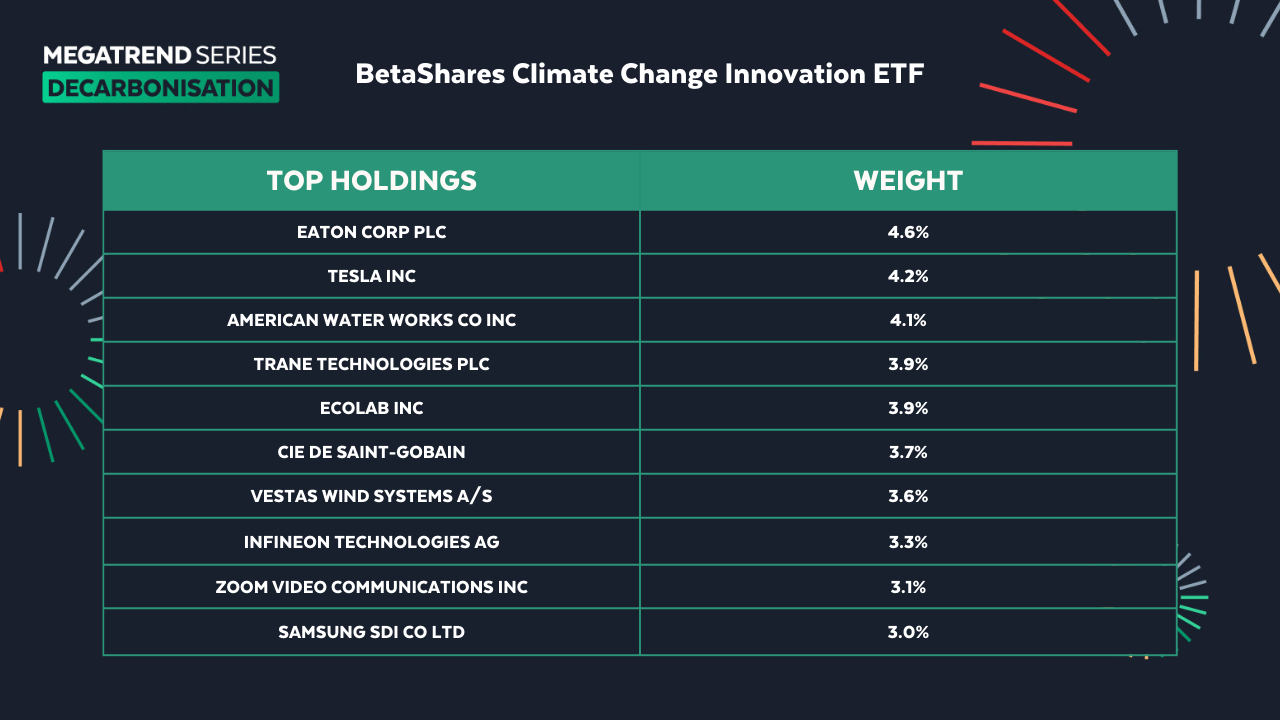
ETFS Battery Tech & Lithium ETF (ASX: ACDC)
"ACDC's main focus is to invest in the battery technology thematic. When you think about this theme, it is not only just Tesla. It is the complete value chain: From lithium mines to the producers of the batteries themselves to the companies that directly utilise battery technology or have battery storage projects."
Accordingly, they invest in two of your favourite lithium producers in Pilbara Mineral Resources and Mineral Resources, alongside an array of users along the supply chain.
If you are looking for direct exposure to this electrifying trend, Chugh adds "ACDC is currently the only ETF in Australia that invests exclusively in battery makers and lithium miners, and while other funds may broadly commit to clean energy or vaguely-defined climate opportunities, ACDC has a clear and singular focus, making it one of a kind."
VanEck Global Clean Energy ETF (ASX: CLNE)
This ETF was "Australia's first clean energy ETF" and invests in the largest companies involved in clean energy production and associated technologies globally, covering both developed and emerging markets.
Energy production is responsible for emitting 73.2% of the world's fossil fuels. This fact led VanEck Asia Pacific CEO and managing director, Arian Neiron to declare that investing in the transition to clean, renewable energy will "make the biggest impact to help halt climate change" while also "delivering the best investment outcomes."
"This is why most, if not all government climate policies around the world are focused on energy as the primary vehicle for decarbonisation... The transition is widely regarded as one of the true global megatrends and represents the most significant, long-term investment opportunity within the climate change complex."
BetaShares Climate Change Innovation ETF (ASX: ERTH)
If you know working against climate change is important but remain unsure what theme to invest in, then this ETF may be for you. ERTH invests globally in companies that derive at least 50% of their revenues from products and services that help to address climate change and other environmental problems through the reduction or avoidance of CO2 emissions.
"What sets ERTH apart is the fact that the Fund invests in companies beyond clean energy providers and includes innovative companies that are addressing other challenges associated with efforts to address climate change." - Peter Harper (BetaShares).
This breadth of focus offers natural diversification when it comes to addressing the climate crisis.
"The Fund includes companies involved in green transport, waste management, sustainable product development, and improved energy efficiency and storage (for example)...Not only are these companies helping improve environmental outcomes, they are also on the leading edge of exciting technological breakthroughs in their respective industries."
The BetaShares cousins finished equal fifth with each other on the charts. What distinguishes ERTH from ETHI (aside from one letter) is that ETHI's portfolio consists of large global stocks identified as “Climate Leaders.” The companies must have also passed screens to exclude companies with direct or significant exposure to fossil fuels or engaged in activities deemed inconsistent with responsible investment considerations.
ETHI has a broader mandate which allows it to contain some of the largest companies in the world such as Apple and Visa. In fact, 38.7% of the holdings are allocated to the IT sector. It has been a clear historic favourite within the theme - Mark Monfort from ETFtracker revealed that the ETF has been a clear winner within the arena, and has the most FUM out of the 21 ESG-focused ETFs on the market (as at July 2021).
ETFS Hydrogen ETF (ASX: HGEN)
The final ETF on our list is another specific theme in the effort to decarbonise the planet. The fund invests in the hydrogen economy through a concentrated portfolio of hydrogen companies, with an emphasis on pure-play strategies
While hydrogen has been a concept for many decades, it has only recently been recognised by governments as a possible clean energy solution. Hydrogen's efficiency makes it an attractive prospect: it has three times the energy potential of petrol on a weight for weight basis. However, the resource strain involved in harnessing electricity from it remains an ongoing issue. This is where green hydrogen fits in - hydrogen produced from completely renewable energy sources. If solved, this could be the key to unlocking widespread decarbonisation.
We're at the very early stages of this investment theme, which is why you may see some volatility within some of these companies. They're still developing technology and running a lot of R&D. Over the past 12 months, there has been a real big shift from governments. Whenever we consider megatrends, we talk about government support, and that's what is starting to occur within the hydrogen thematic - similar to what we have previously seen in battery technology. - Kanish Chugh, ETF Securities.
Other notable ETFs:
- KraneShares Global Carbon Strategy ETF (NYSE: KRBN)
- Vanguard Ethically Conscious Intl Shs Idx ETF (ASX: VESG)
Funds
Finally, a number of you suggested managed funds which frankly makes us very happy with ourselves (time for a bonus?). They may operate in different areas of the decarbonisation theme, but all are crowd favourites.

Australian Ethical
The superannuation provider has been giving Australians access to ethical investments for over 35 years. It is now geared up to expand into the managed fund space through a new ETF, the Australian Ethical High Conviction ETF (ASX: AEAE), which will invest accross the ASX300 and combine ethics with returns.
Their Head of Ethics Research Dr Stuart Palmer recently deliver a keynote to launch this Decarbonisation Megatrend Series.
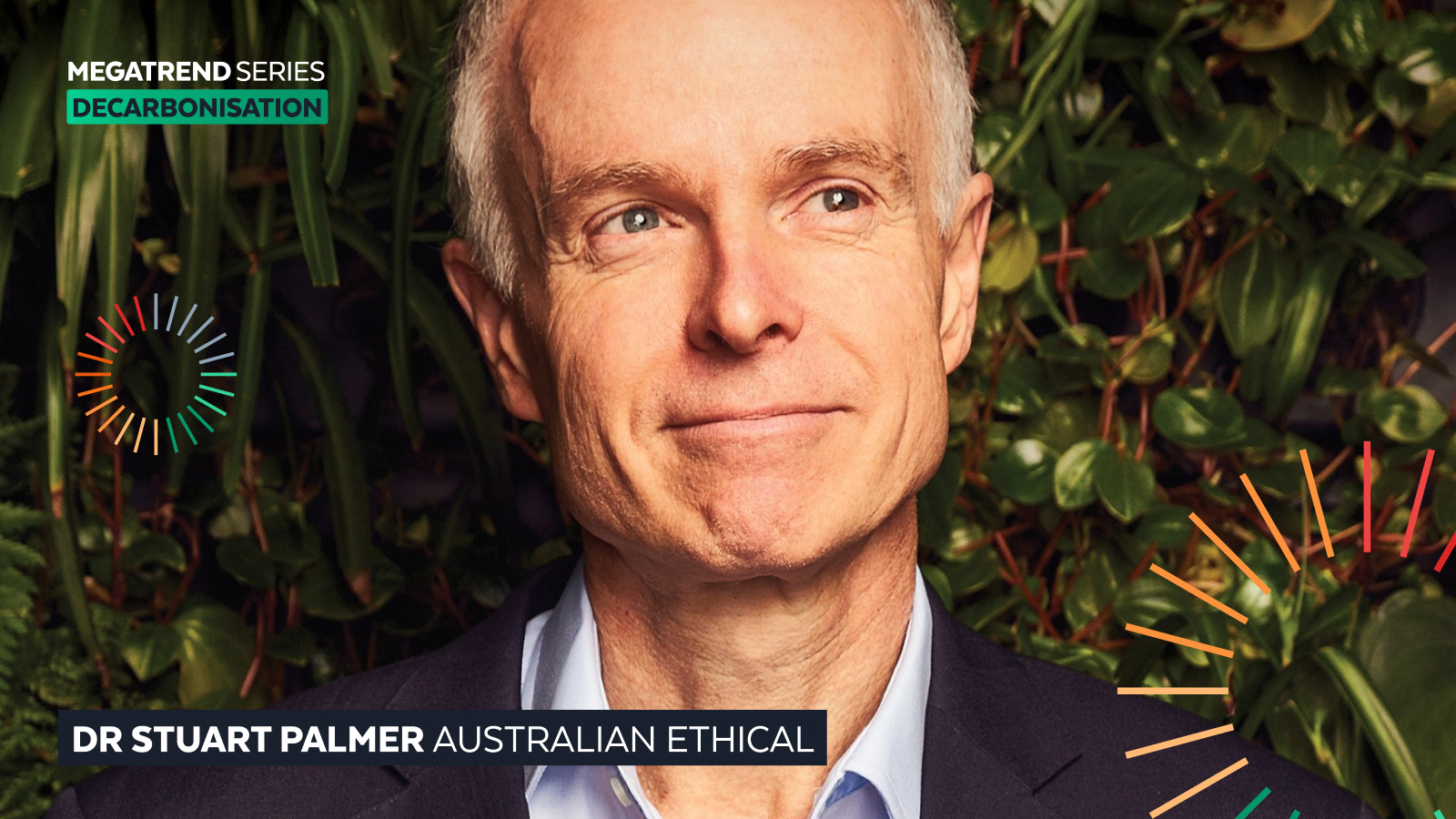
Tribeca Global Natural Resources Fund (ASX: TGF)
Given our reader's infatuation with mining our way to net-zero, it makes sense for this to be reflected in your choice of managed funds too. Throughout the cycle, natural resources tend to exhibit significantly higher volatility than the broader markets, and this fund seeks to benefit from the inherent volatility in the natural resource sector.
A recent theme they have identified is focusing on transition assets over a blanket rule to divest any companies linked to fossil fuels as a more effective way to decarbonise. CEO of Tribeca Investment Partners Asia Ben Cleary spoke to me on this topic.
There was initially a blanket view that divestment was the way forward. For example, BHP and a range of other companies have divested their fossil fuels brought on by pressure from governments and investors. These assets have ended up in the hands of much smaller operators. All this does is reallocate the production of these emissions. It reallocates to a higher cost of capital so the chance for operating issues goes up exponentially.
When it comes to global decarbonisation, there is undoubtedly an important role for commodities to play. Will this continue to offer tailwinds to this commodities supercycle?
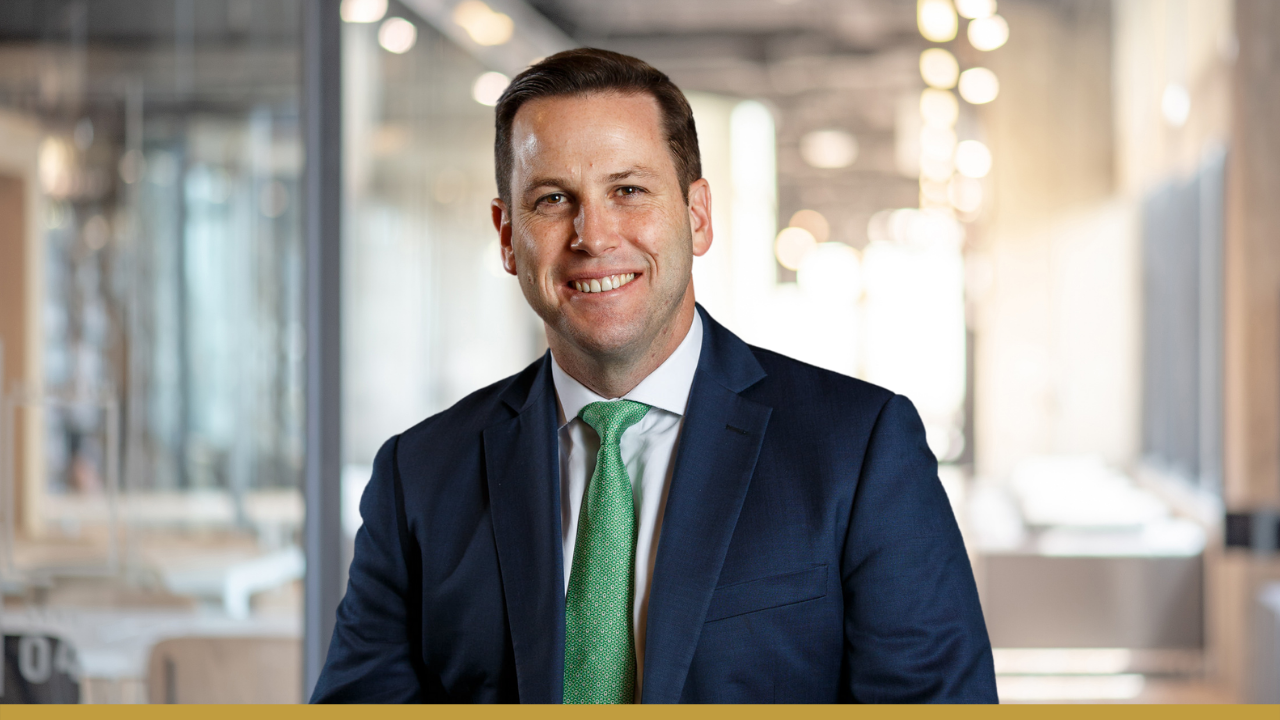.png)
Munro Climate Change Leaders (ASX: MCCL)
This recently launched fund runs a concentrated portfolio focused on the world's "next big structural opportunity." It invests in climate winners - companies that will help enable the decarbonisation of the planet. Estimates place the cost of the transition at over $50 trillion, which presents an enticing opportunity for Nick Griffin and his team:
We've segmented this fund, to try and capitalise on this opportunity. We see $50 trillion of capex that's going to be spent to help decarbonize the planet, which is ultimately going to equal $50 trillion in revenues to the companies that help enable that decarbonization. We have split the stratgy into four quadrants, where we see companies that could win.
The concentrated strategy invests accross 4 major themes:
- Clean energy
- Energy efficiency
- Clean transport
- Circular economy
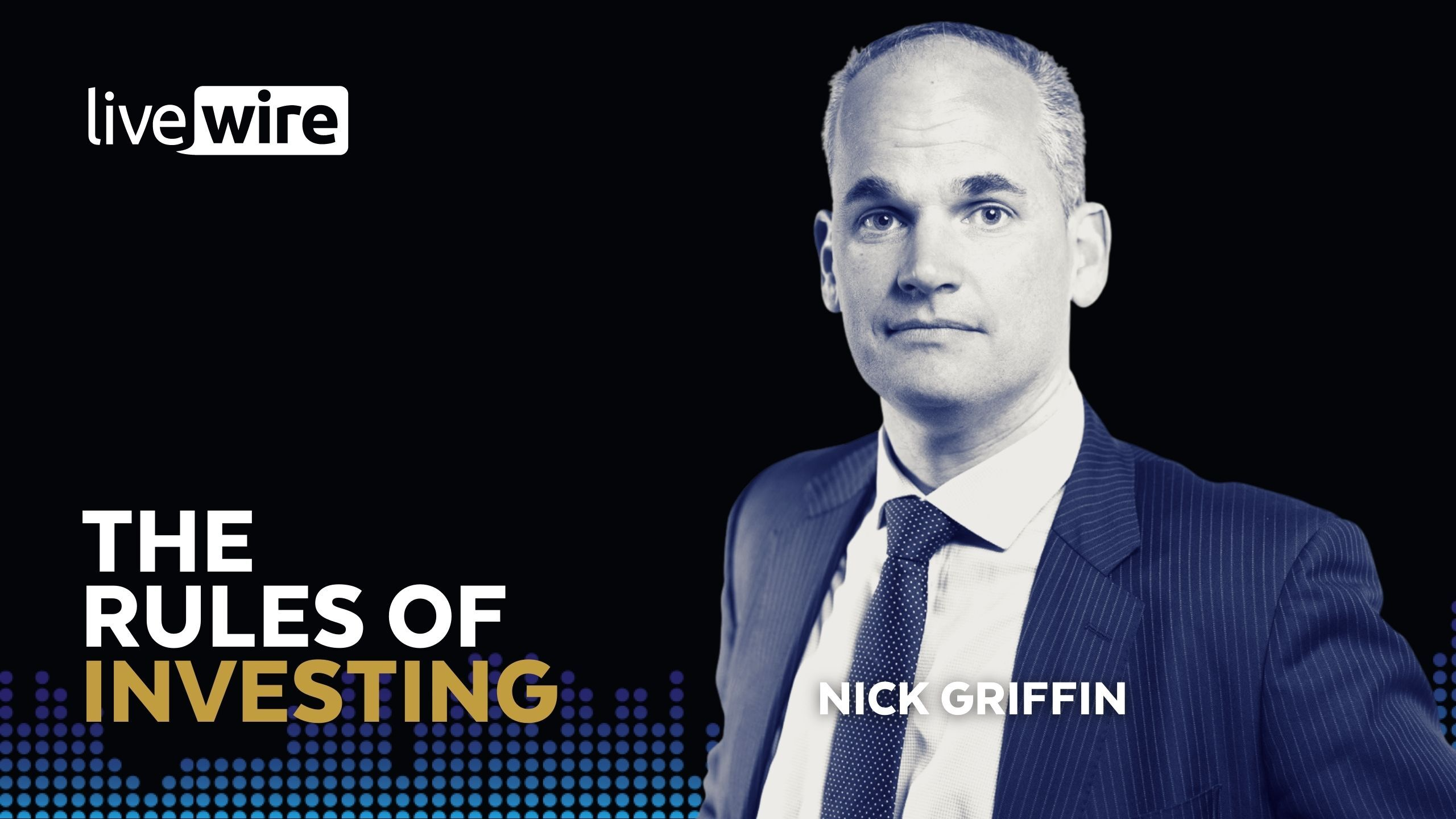.jpg)
Livewire's Decarbonisation Megatrend Series brings you feature articles that go deep on carbon-neutral investing, alongside special episodes of Buy Hold Sell, a megatrend investing podcast and interactive panel sessions with leading fund managers. You can find all the articles, videos and the podcast on our dedicated Series page. [Link: (VIEW LINK)]
4 topics
16 stocks mentioned
13 contributors mentioned

